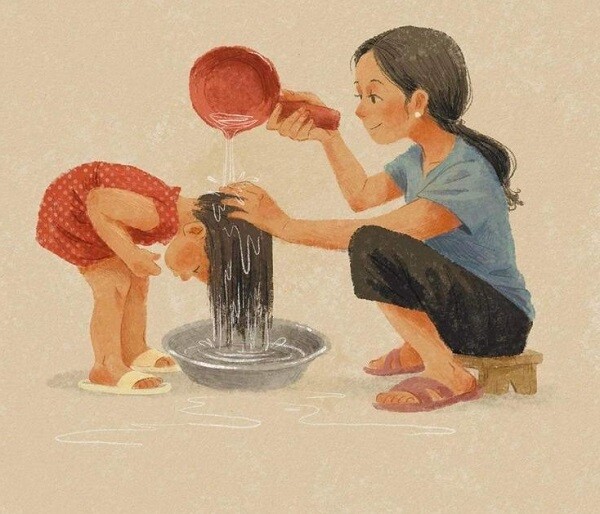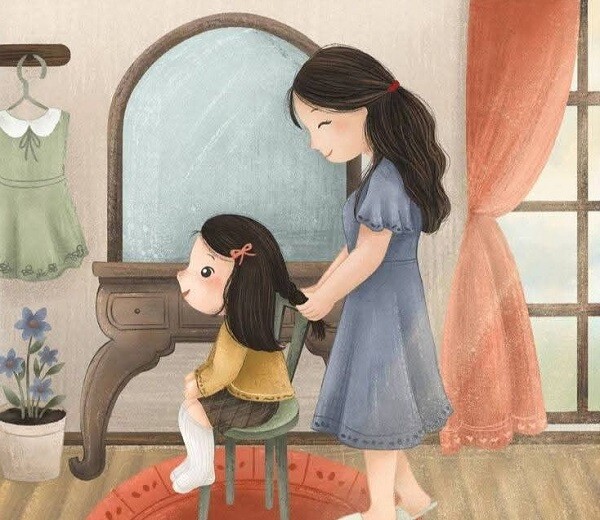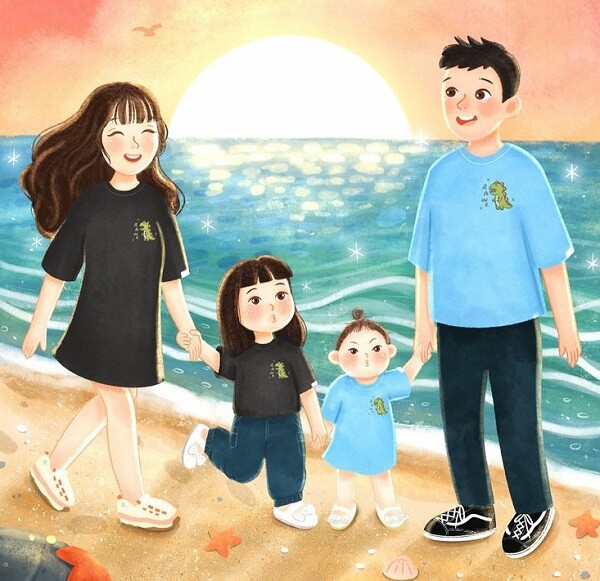Although it’s invisible and intangible, like the air we breathe, children will feel its absence. They will falter and wither without it.
Most of what we say and do is driven by our subconscious. When parents provide a sense of security, it empowers children to take on the world.
But where does this sense of security come from? It lies in these three subtle yet powerful aspects.


Image source: World Health Organization (WHO)
A mother’s gentle and patient demeanor can instantly transform into a tense and pressured state as soon as she answers a work call. Her voice may rise in pitch, her speech quickens, and her brows furrow.
Her 3-year-old son quietly puts down his toys and hides on the sofa, not daring to come out until she hangs up. He senses the change in the air, as if a wave of anxiety is sweeping over him.
Children are highly attuned to the emotions of adults, and this little boy is no exception. This behavior is a reflex, part of their psychological development, as they learn to sense and respond to their surroundings.
Their brains contain special cells called “mirror neurons,” which instinctively sense and mimic the emotional states of their parents. These neurons act as mirrors, helping children understand and connect with adult emotions.
Moreover, children’s thinking is inherently self-centered. They lack the cognitive ability to realize that “this is my mother’s work mood, and it has nothing to do with me.” Instead, they naturally associate any changes with themselves. When he sees his mother’s furrowed brow, he may think he has done something wrong or that he is the cause of her distress.
As her facial expressions change after taking the work call, emotions like anxiety and irritability spread. Sensing something amiss, the child immediately activates his “defense mechanism” to protect himself. He won’t dare to sound the “alarm” until he is sure he is safe. This can lead to the child forming negative emotions, such as anxiety or a sense of insecurity, whenever he hears the phone ring or sees his mother take a call.

A stable emotional state in parents creates a peaceful world for children.
If such situations occur frequently, children start to feel that their environment is unstable, leading to issues with self-confidence and communication skills in the future.
Hence, it’s crucial for parents to be aware of how their emotions impact their children. They should strive to create a safe and stable environment where children can grow without worrying about adult emotions.
This doesn’t mean hiding all emotions but rather maintaining consistency in emotional expression so that children feel secure and loved.

Actions speak louder than words: “I’m here” beats “I love you” any day
There’s nothing wrong with parents expressing their love verbally. But for children, true security doesn’t come from sweet nothings; it comes from actions and presence.
For instance:
– When your child falls, instead of shouting, “Don’t cry!” try sitting down and asking, “Are you hurt? Let me see.”
– If they wake up from a nightmare, rather than saying, “It’s nothing, just a dream,” hold them and say, “You’re scared? I’m here.”
– After a game loss, hug them and say, “I know it’s upsetting. I felt the same way when I lost as a kid.”
Your calmness in the face of their tears provides security. Your presence in their moments of fear offers a safe haven.
So, if you can be a container for your child’s emotions, accepting both the good and the bad, while providing understanding and care, they will develop the confidence to navigate life’s ups and downs.

Actions that convey “I’m here for you” provide a deeper sense of security than mere words.

Allow your child to find their own pace
It’s a fact: when parents rush their children with phrases like “hurry up” or “faster,” the children tend to slow down. They’re not deliberately resisting, but the rushing triggers a stress response, and once the brain is stressed, movements slow down.
Take learning to walk as an example. Some children take their first steps at 9 months, while others don’t walk steadily until they’re 18 months old. But eventually, they all run and jump.
“Slow and steady wins the race”
Consider learning to dress oneself. Although you’ve taught your child multiple times, they may still struggle with this skill. Each time they attempt to dress themselves, they have to think and rearrange their thoughts.

Allow your child to find their own rhythm and pace.
If you remain patient and say, “Don’t worry, I’ll wait for you,” or “Do you need help?” they will gradually figure out the rules: it’s easier to put on clothes this way, and taking my hand out that way is harder…
On the other hand, if they are constantly rushed, their brain perceives a threat to their survival, diverting all resources to deal with this “danger.” This deprives them of the opportunity to explore and think for themselves.
A child’s sense of security is built on thousands of ordinary moments, not on fleeting moments of companionship.
Carl Jung, a renowned psychologist, referred to this as “individuation,” allowing children to be themselves rather than who their parents expect them to be. This confidence comes from parents accepting their children’s slowness, tears, and differences.




































